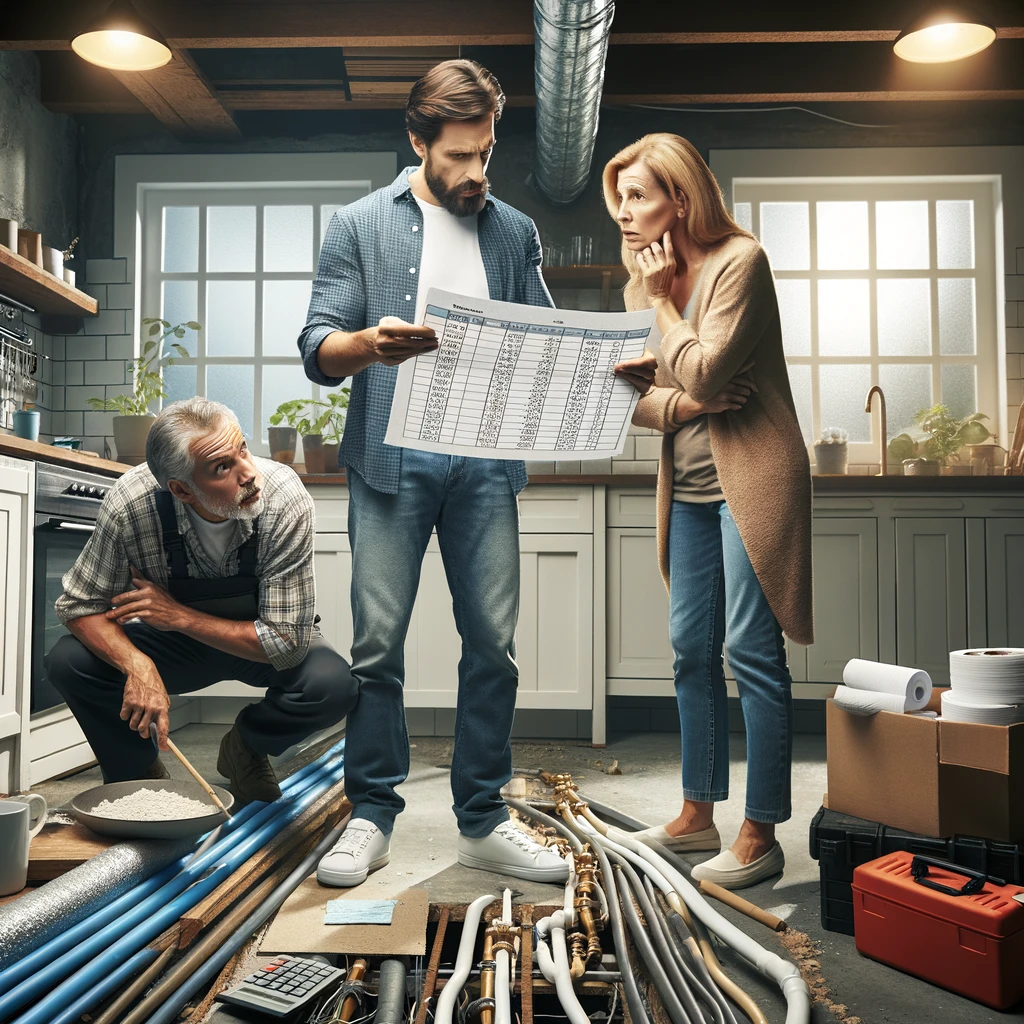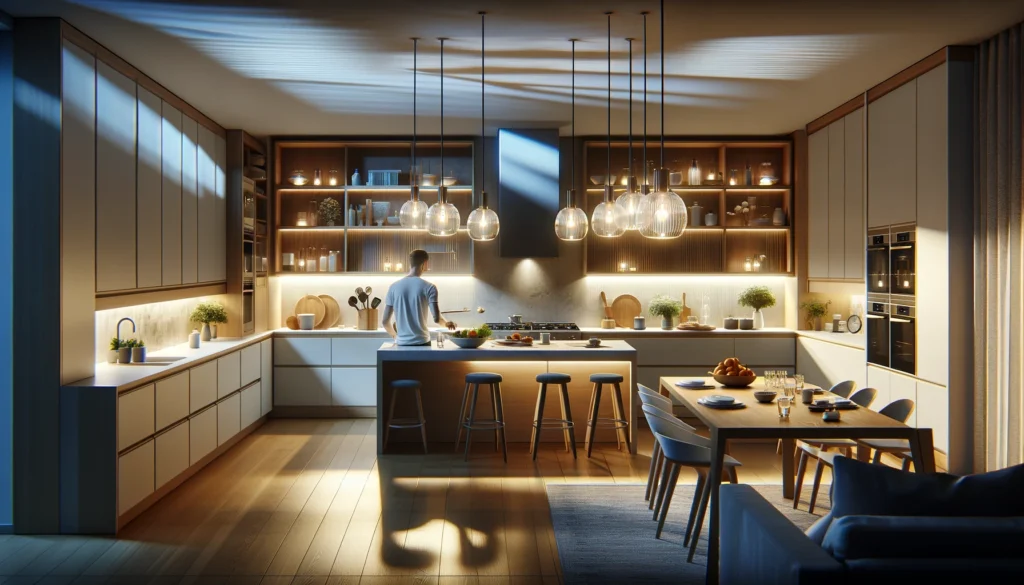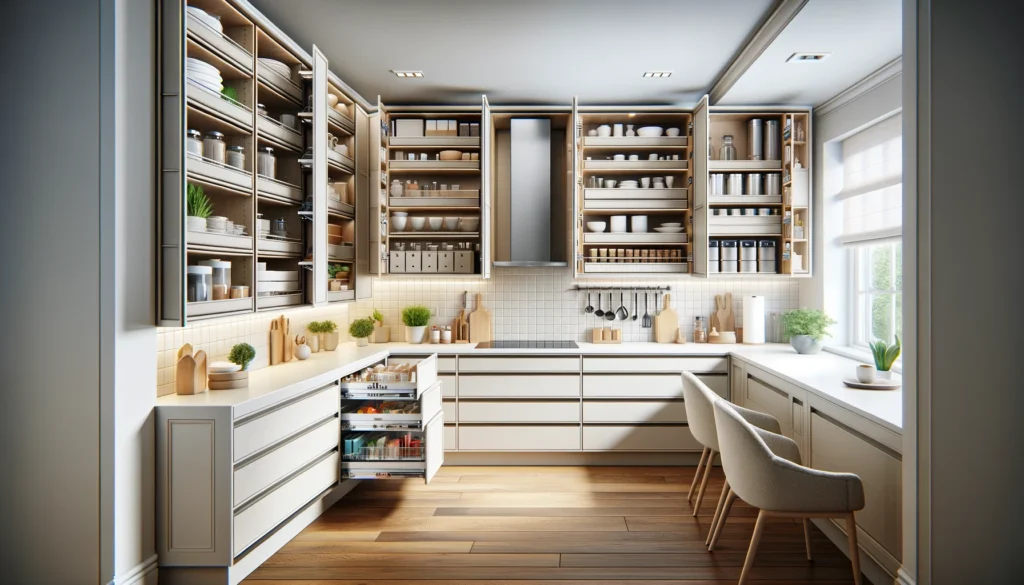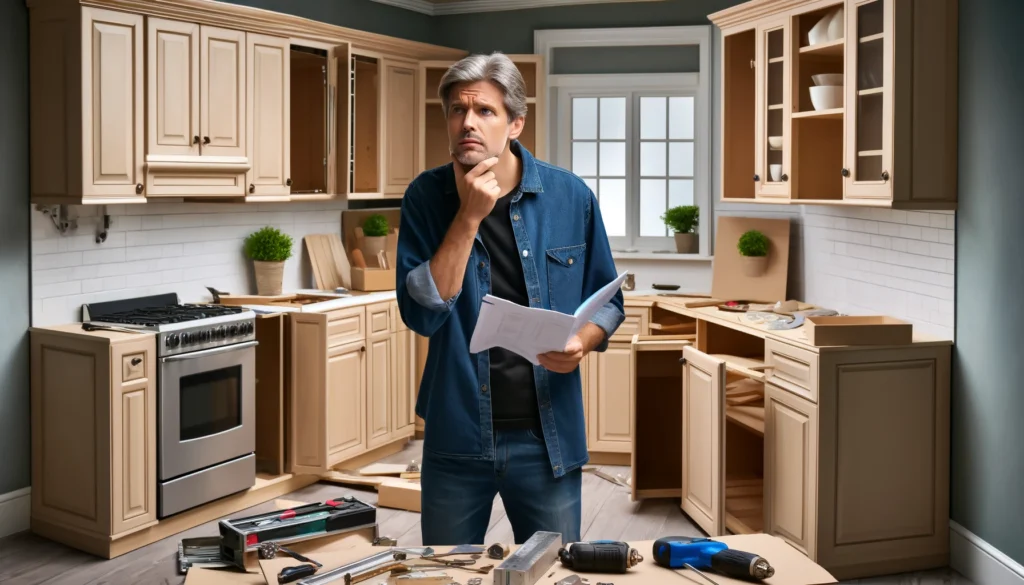Top 10 Kitchen Renovation Mistakes For 2024
A kitchen renovation can transform your home, adding value and enhancing your living space. However, the journey from old to new is fraught with potential missteps. In this list, we delve into the Top 10 Kitchen Renovation Mistakes for 2024 that homeowners make.
By highlighting these common errors, we aim to guide you through a smoother renovation process, ensuring your kitchen not only looks stunning but is also functional and welcoming.
1. Underestimating the Budget:
One common mistake in kitchen renovations is failing to set a realistic budget. Often, homeowners encounter unexpected costs, such as necessary plumbing or electrical upgrades, which can significantly increase overall expenses. If these additional costs are not anticipated in the budget, they may force compromises in both the quality of materials and the final design. To prevent such situations, it’s wise to incorporate a contingency fund of at least 20% into your initial budget calculation. This extra cushion helps to manage unforeseen expenditures smoothly, ensuring that the renovation maintains high quality without the need for financial shortcuts.
2. Overlooking Functionality:
In the pursuit of creating a visually stunning kitchen, the importance of functionality can occasionally be overlooked. A kitchen may look perfect but if it lacks practical usability, it can turn into a constant source of annoyance in everyday life. It is essential to thoughtfully consider the layout, ensuring there is ample space for movement. Proper placement of key elements like the stove, sink, and refrigerator should form an efficient work triangle, promoting a seamless flow during cooking and cleaning activities. Additionally, storage options should be carefully planned to maximize available space while avoiding a cluttered appearance, thereby maintaining both the aesthetic appeal and functional efficiency of the kitchen.
3. Ignoring Lighting Needs:
Lighting is crucial in defining both the ambiance and functionality of a kitchen. Inadequate lighting can hinder cooking operations and detract from the visual appeal of your newly renovated space. To achieve a balance of aesthetics and usability, it’s important to integrate a combination of task, ambient, and accent lighting. Task lighting, such as under-cabinet lights, illuminates work areas effectively, ensuring that cooking and preparation tasks can be carried out with ease. Ambient lighting provides a soft glow that enhances the overall warmth of the kitchen, while accent lighting highlights architectural features or decorative elements. Including dimmable options, especially in dining areas, allows for adjustable lighting levels, making the kitchen adaptable to different activities and creating an inviting atmosphere.
4. Choosing Trends Over Timelessness:
While it’s tempting to embrace the latest design trends for your kitchen remodel, it’s important to consider their longevity. Trends can rapidly become outdated, which might lead to a kitchen that feels prematurely old-fashioned. Instead of committing to finishes, colors, or appliances that are trendy now but might not stand the test of time, choose a timeless design that resonates with your personal aesthetic. You can still enjoy current trends but do so in a way that allows for easy updates in the future. Incorporate fashionable elements through accessories or paint colors—items that can be effortlessly changed without significant expense or effort. This approach ensures your kitchen remains stylish and adaptable, reflecting both modern trends and timeless appeal.
5. Neglecting Storage Solutions:
A frequent oversight in kitchen design is the underestimation of necessary storage or selecting storage solutions that fail to meet specific needs. Cluttered countertops and overflowing cabinets contribute to a sense of disorder and chaos in the kitchen environment. To address this, investing in custom cabinetry can be a wise decision. Custom cabinets are designed to maximize storage capacity, neatly accommodate appliances, and make efficient use of every available inch of space. Features such as pull-out drawers, corner cabinets, and overhead storage options can significantly enhance the functionality and organization of your kitchen. These elements help maintain a tidy and efficient workspace, ensuring that everything has its place and is easily accessible.
6. Poor Material Choices:
Choosing materials that lack durability or are unsuitable for a kitchen environment can result in early deterioration and damage. For instance, while hardwood flooring and marble countertops may appear elegant, they demand continuous maintenance and are susceptible to scratches, stains, and other forms of wear. It’s crucial to conduct thorough research and select materials that not only enhance the aesthetic appeal of your kitchen but are also robust enough to endure the daily demands of kitchen activities. Options like quartz countertops and porcelain tiles are excellent choices. Quartz is highly resistant to scratches and stains, requires minimal upkeep, and comes in a variety of colors and patterns that can mimic natural stone. Porcelain tiles are equally durable and offer versatility in design, making them ideal for floors, backsplashes, and even countertops. By opting for such materials, you ensure that your kitchen remains functional and beautiful for years to come.
Embarking on DIY projects in a kitchen renovation without the requisite skills can lead to less-than-ideal outcomes and expensive errors. While personal involvement in updating your kitchen can be fulfilling, it’s important to recognize the limits of your capabilities. Tasks such as electrical work, plumbing, or cabinetry require specialized skills and precision to ensure they are executed correctly. Hiring professionals for these critical aspects of your renovation is essential. It guarantees that the work adheres to safety standards and is performed with a high level of quality. Engaging experts not only helps avoid costly mistakes but also saves time and stress, making your investment in your kitchen both efficient and effective. This strategic approach not only preserves the integrity of your renovation but also ensures its longevity and functionality.
8. Forgetting About Ventilation:
Adequate ventilation is a critical component often overlooked in kitchen design but is vital for maintaining a clean and pleasant environment. Effective ventilation systems, such as a high-quality range hood that vents to the outside, play an essential role in removing cooking odors and preventing the accumulation of grease. To ensure optimal functionality, it is important that the range hood is properly sized relative to your stove and the overall kitchen space. A well-chosen hood will efficiently filter out smoke, odors, and airborne grease, keeping your kitchen air fresh. Additionally, ensuring that your ventilation system is adequately powerful and correctly installed can enhance the overall cooking experience, making the kitchen a more enjoyable and hygienic space for food preparation.
9. Skimping on Countertop Space:
Countertop space is a fundamental element in any kitchen, crucial for food preparation and making both cooking and entertaining smooth and enjoyable activities. When designing your kitchen layout, it is essential to incorporate ample countertop areas. Consider including additional spaces such as islands or breakfast bars, which not only provide more surface area for prep work but also facilitate social interactions during meal preparation. Choosing materials for your countertops is equally important; options like quartz or granite are highly recommended. These materials are not only durable and resistant to scratches and heat, but also easy to clean and maintain, combining practicality with aesthetic appeal. The right choice of countertop material can significantly enhance both the functionality and style of your kitchen, making it a welcoming and efficient space.
10. Ignoring the Backsplash
The backsplash in a kitchen serves a dual purpose: it is a significant design element and a practical feature that protects your walls from spills and stains. Opting for a cheap or unsuitable material for the backsplash can result in water damage and complicate the cleaning process. To avoid such issues, it’s crucial to choose durable and easy-to-clean materials. Ceramic tile and glass are excellent choices for a backsplash. Both materials offer resilience against moisture and are simple to maintain, ensuring that the kitchen remains clean and hygienic. Additionally, these materials come in a variety of colors, patterns, and finishes, allowing you to add a touch of elegance and personal flair to your kitchen. A well-chosen backsplash not only enhances the kitchen’s aesthetic but also contributes to its overall functionality, making it a smart investment in the design and longevity of your space.
Top 10 Kitchen Renovation Mistakes for 2024 Wrap Up
Renovating your kitchen is a significant investment that can enhance your home’s value and your quality of life. By steering clear of these Top 10 Kitchen Renovation Mistakes for 2024, you can ensure a successful project that combines beauty, functionality, and durability.
Remember, careful planning, budgeting, and a focus on quality and practicality are key to achieving the kitchen of your dreams. Incorporate these insights into your renovation plan to avoid common pitfalls and create a space that you’ll love for years to come.
Top 10 Homes
Discover endless inspiration for your home at Top10Homes. Dive into our blog for expert tips, insightful articles, and captivating ideas to elevate every corner of your living space. Don’t keep this treasure trove to yourself – share the wealth of knowledge with your friends and followers on social media. Together, let’s make every home a sanctuary worth celebrating.









